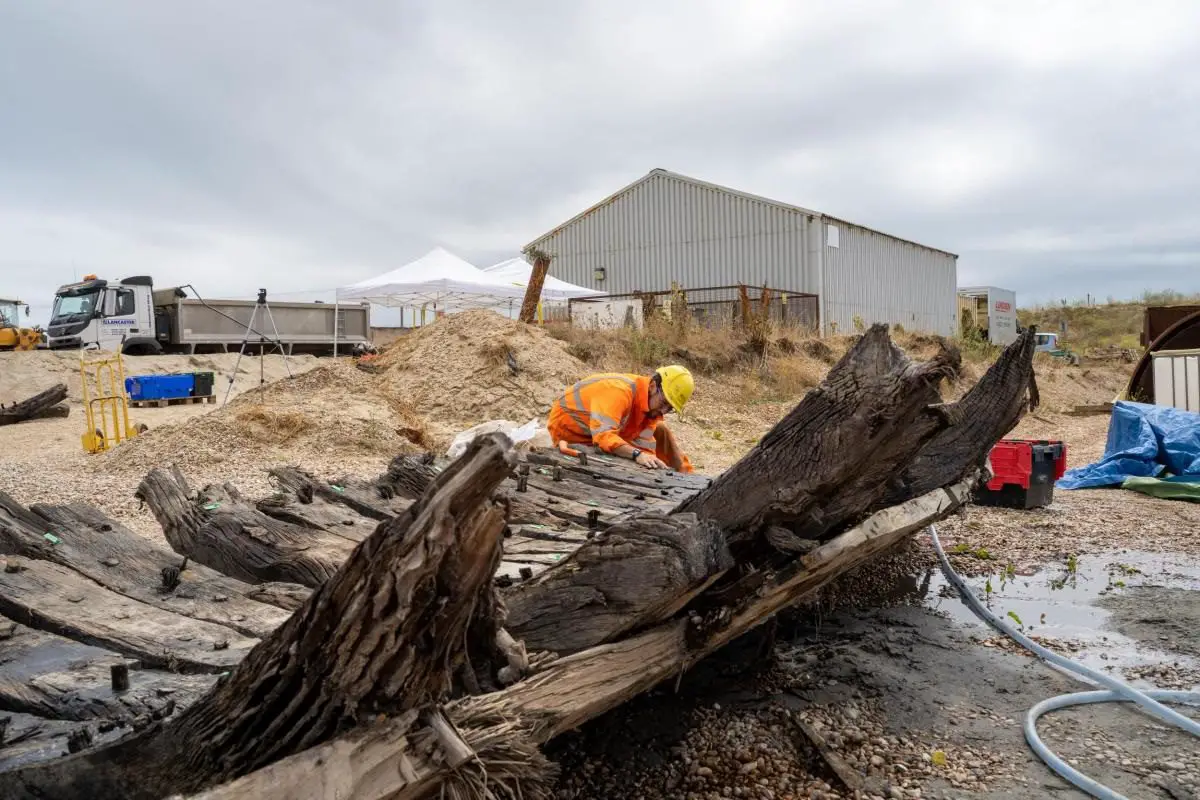Earlier in 2022, CEMEX workers dredging for aggregates at a quarry on the Dungeness headland, in Kent, England, found the remains of old timbers from a ship, around a quarter of a mile from the Kent coastline.
Upon realising the importance of the discovery, Kent County Council commissioned specialists from Wessex archaeology, in support with funding from Historic England.
What the archaeologists discovered, is a rare Elizabethan ship, which a dendrochronological analysis has dated the timbers being felled between 1558 and 1580, during the reign of Queen Elizabeth I.
At the time, England was in a transitional period for ship construction, when ships moved from a traditional clinker construction (similar to Viking vessels) to frame-first-built ships, a technique used in the construction of the Mary Rose, built between 1509 and 1511, and ships that were used to explore and colonise the New World.

Andrea Hamel, Marine Archaeologist at Wessex Archaeology, said: “To find a late 16th-century ship preserved in the sediment of a quarry was an unexpected but very welcome find indeed. The ship has the potential to tell us so much about a period where we have little surviving evidence of shipbuilding but yet was such a great period of change in ship construction and seafaring.”
The ship was constructed using English Oak, for which the researchers have so far uncovered over 100 surviving timbers. Experts believe that the ship was either wrecked on the shingle headland, or was simply abandoned at the end of the ships usefulness.
Antony Firth, Head of Marine Heritage Strategy at Historic England, said: “The remains of this ship are really significant, helping us to understand not only the vessel itself but the wider landscape of shipbuilding and trade in this dynamic period. CEMEX staff deserve our thanks for recognising that this unexpected discovery is something special and for seeking archaeological assistance. Historic England has been very pleased to support the emergency work by Kent County Council and Wessex Archaeology, and to see the results shared in the new season of Digging for Britain.”
The story of this rare Elizabethan ship will feature on Digging for Britain on BBC2 at 8pm on 1 January 2023.
Header Image Credit : Wessex Archaeology







